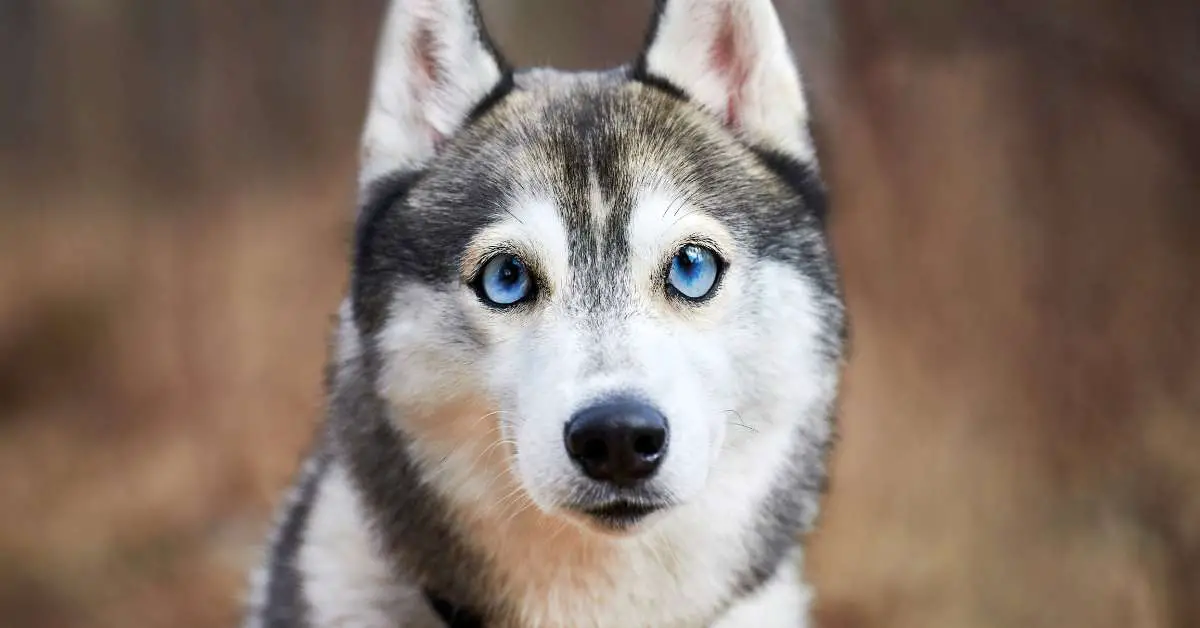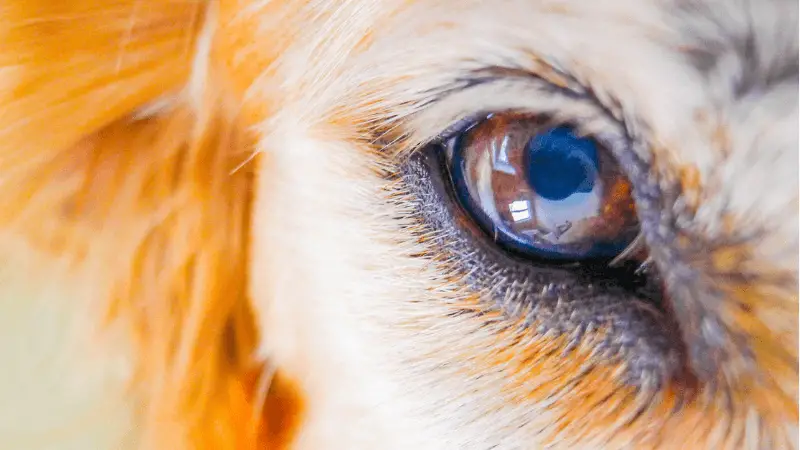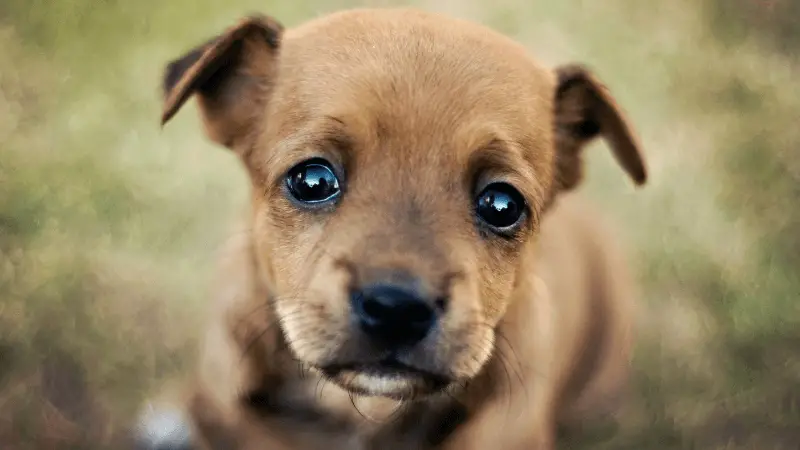Clearing the Fog: Understanding Dogs Eyes Cloudy Appearance

As a responsible pet owner, observing changes in your dog’s well-being is crucial. One alarming sign that often prompts concern is the presence of dogs eyes cloudy.
After all, our furry friends’ eyes are the windows to their souls, and the last thing we want is for them to experience vision issues or discomfort.
Key Notes:
- Unveiling Canine Cloudiness: Navigate the causes, symptoms, and preventative measures for cloudy eyes in dogs.
- Clear Vision, Happy Pets: Learn actionable steps to address and prevent cloudy eyes in your furry companions promptly.
- Eye Health for Dogs: Explore the essentials of maintaining optimal ocular wellness, from early signs to vet-recommended treatments.
What Are Cloudy Eyes? Unraveling the Canine Enigma
Cloudy eyes in dogs manifest as a hazy or opaque appearance in the eye, signaling an underlying issue that requires attention.
Imagine looking through the foggy glass; that’s the canine equivalent. These cloudy eyes might indicate various health conditions affecting your pet’s vision and overall ocular health.
Possible Causes of Cloudy Eyes in Dogs
1. Cataracts
Cataracts, a prevalent ocular concern among our canine companions, manifest as a clouding of the eye’s lens.
This condition, akin to its occurrence in humans, is not discriminatory and can affect dogs of any age or breed.
The consequence? Impaired vision is a distressing realization for both the pet and the owner.
Cataracts develop when proteins within the lens begin to clump together, obscuring the passage of light to the retina.
This gradual clouding often starts small but can escalate, hindering a dog’s ability to see clearly. Early detection becomes crucial in managing this condition effectively.
Various factors, including genetics, diabetes, or ocular trauma, may develop cataracts. Genetic predisposition is particularly noteworthy, emphasizing the importance of understanding a dog’s breed-specific susceptibilities.
Identifying cataracts requires a thorough eye exam. Observation of behavioral changes, coupled with specialized eye tests, aids in pinpointing the presence and severity of cataracts.
Timely intervention is key to preserving visual acuity.
According to David Gould (DVM), “Phacoemulsification is now the treatment of choice for cataract surgery in dogs with a success rate of up to 95 percent.”
2. Nuclear Sclerosis
Often mistaken for canine cataracts, however, nuclear sclerosis (also known as lenticular sclerosis) is a benign age-related transformation occurring in the eyes of senior dogs.
This process involves the hardening of the lens, accompanied by a distinctive bluish haze. Unlike cataracts, nuclear sclerosis typically doesn’t significantly impair vision.
As dogs age, their lenses change, leading to the characteristic bluish tint.
While this may concern pet owners, it’s essential to differentiate between nuclear sclerosis and more severe conditions affecting ocular health in older dogs.
Dogs experiencing nuclear sclerosis may adapt to the changes in their vision. The bluish haze might be noticeable to owners, but the impact on a dog’s ability to navigate their surroundings is often minimal.
Any veterinary ophthalmologist uses specific diagnostic techniques to differentiate nuclear sclerosis from cataracts, ensuring accurate assessments.
Despite its benign nature, regular check-ups are crucial to monitor the progression of this age-related ocular phenomenon.

3. Corneal Dystrophy
Corneal dystrophy is not merely a cloud on the horizon; it’s a genetic disorder that casts a shadow on a dog’s cornea.
This condition involves the accumulation of cloudy material on the cornea, significantly impacting vision and necessitating prompt veterinary attention.
According to Pennie L. Cooley (DVM) from Eye Clinic for Animals, Olympia, United States, “Endothelial Corneal Dystrophy (with corneal edema) occurs in both the dog and the cat.”
The cloudy deposits on the cornea obstruct light, leading to blurred vision.
Dogs with corneal dystrophy may exhibit signs of discomfort, such as excessive tearing or squinting, prompting vigilant owners to seek professional care.
Certain breeds are more susceptible to corneal dystrophy, underscoring the importance of breed-aware veterinary care.
Understanding breed predispositions allows for proactive measures in managing and mitigating the impact of this genetic ocular concern.
Veterinary intervention may involve topical medications or, in severe cases, surgical procedures.
Regular monitoring is crucial to track the progression of corneal dystrophy and adjust treatment plans accordingly.
4. Injury
The eyes, delicate and exposed, are susceptible to injury. Trauma to the eye can lead to cloudiness, underscoring the critical need for prompt veterinary care in the aftermath of any eye-related injuries.
Injuries resulting in cloudiness may stem from various sources – a collision with a foreign object, an altercation with another animal, or even self-inflicted harm during play.
Owners should remain vigilant about potential hazards in their pet’s environment.
Swift intervention is paramount when dealing with eye injuries. Owners witnessing trauma or suspecting ocular damage should seek professional veterinary assistance promptly.
Delay can exacerbate the severity of the injury and the subsequent cloudiness.
The approach to treating cloudiness resulting from injury varies based on the nature and extent of the trauma.
Topical medications, protective measures, or, in severe cases, surgical interventions may be recommended to restore clarity and alleviate discomfort.
5. Glaucoma
Among the more serious ocular conditions, glaucoma looms as a silent threat.
Increased pressure within the eye can lead to cloudiness, and glaucoma demands immediate medical intervention to preserve vision and alleviate pain.
Glaucoma can develop suddenly, catching both owners and pets off guard.
The elevated intraocular pressure may lead to a cloudy appearance in the eye, accompanied by symptoms such as redness, squinting, and even behavioral changes.
Considered an ocular emergency, glaucoma necessitates immediate veterinary attention.
Delayed treatment can result in irreversible damage to the optic nerve, exacerbating cloudiness and potentially leading to vision loss.
Treatment of glaucoma involves a multifaceted approach, including medications to reduce intraocular pressure, pain management, and potential surgical interventions.
Regular monitoring is essential to manage this ongoing threat to ocular health.
6. Pannus
Pannus, a term that might sound elusive, is a condition commonly witnessed in specific dog breeds.
This ocular challenge involves a slow, insidious clouding of the cornea, and its roots lie in an intricate immune response that triggers changes over time.
Pannus is often regarded as an autoimmune response, where the immune system mistakenly targets the cornea.
This results in a gradual infiltration of blood vessels and pigmented cells, forming a cloudy layer over the cornea’s surface.
Certain breeds, such as German Shepherds and Border Collies, exhibit a higher predisposition to developing pannus.
Regular monitoring, especially in these breeds, allows for early detection and management of this immune-mediated ocular challenge.
Veterinary intervention is crucial in managing pannus.
Treatment may involve anti-inflammatory medications, immunosuppressive drugs, or, in severe cases, surgical options to mitigate the progression of corneal cloudiness and preserve visual function.

7. Corneal Ulcers
Corneal ulcers, a result of infections or injuries to the cornea, can cast a shadow of cloudiness over a dog’s eyes.
These ulcers compromise the corneal surface, leading to discomfort and visual disturbances.
Infections, often bacterial or fungal, can breach the cornea’s protective layers, causing ulcers and subsequent cloudiness.
Timely identification and treatment of the underlying infection are paramount in preventing further complications.
Injuries, such as scratches or foreign body penetration, can also pave the way for corneal ulcers.
Owners should exercise caution to prevent potential trauma, and immediate veterinary attention is crucial to assess the extent of the injury and mitigate the resulting cloudiness.
Veterinary care for corneal ulcers may involve topical antibiotics, pain management, and protective measures to allow for healing.
Regular follow-ups ensure the resolution of the corneal ulcer and monitor any lingering cloudiness.
8. Uveitis
Inflammation of the uvea, the eye’s middle layer, is a condition known as uveitis.
This inflammation contributes to cloudy eyes and necessitates the specialized expertise of a veterinarian for accurate diagnosis and effective management anterior uveitis.
Uveitis may stem from various causes, including infections, trauma, or underlying systemic diseases.
Identifying the root cause is essential for developing an appropriate treatment plan and addressing the cloudiness associated with uveitis.
In addition to cloudiness, uveitis may present with other symptoms, such as redness, squinting, and light sensitivity.
The multifaceted nature of uveitis requires a comprehensive veterinary examination to ensure thorough and accurate treatment.
Veterinarians may employ anti-inflammatory medications, pain relief, and, in some cases, address the underlying cause of uveitis.
Regular monitoring is crucial to assess the resolution of inflammation and any lingering cloudiness.
9. Corneal Lipidosis
Corneal lipidosis, a condition involving the deposition of fatty substances on the cornea, creates a cloudy appearance that demands attention.
The gradual accumulation of lipids can obstruct vision, necessitating proper veterinary care.
Corneal lipidosis may result from metabolic disorders, nutritional imbalances, or genetic predispositions.
Identifying and addressing the underlying cause is pivotal in managing the condition and alleviating the associated cloudiness.
Veterinary care for corneal lipidosis often involves dietary adjustments, topical medications, or, in severe cases, surgical procedures to remove the lipid deposits.
Regular check-ups aid in monitoring the effectiveness of the chosen management strategies.
10. Dry Eye
Dry eye, or keratoconjunctivitis sicca, results from insufficient tear production, leading to ocular dryness and cloudiness.
This condition emphasizes the need for proactive measures to maintain ocular moisture.
In the absence of adequate tears, the cornea can become dry and irritated, contributing to a cloudy appearance.
Dogs experiencing dry eyes may exhibit signs of discomfort, such as excessive blinking or rubbing of the eyes.
Pet owners play a crucial role in managing dry eye by administering prescribed artificial tears and following the veterinarian’s recommendations for ongoing care.
Regular veterinary check-ups allow for adjustments in treatment plans to address any persistent cloudiness and ensure the comfort of the pet.
Diagnosing Cloudy Eyes in Dogs
When it comes to cloudy eyes in dogs, prompt and comprehensive treatment is paramount to preserving their ocular health.
Both pet owners and veterinarians play crucial roles in addressing this concern. Here’s a detailed look at what can be done from both perspectives:
1. What You Can Do:
A. Observe Behavior
Vigilance is key. Note any behavioral changes in your furry companion. Squinting, excessive tearing, or increased sensitivity to light can be early indicators of ocular distress.
Paying attention to these subtle signs allows for timely intervention.
B. Cleanliness Matters
Maintaining proper eye hygiene is essential. Gently wipe away any discharge from the eyes using a damp cloth.
This not only ensures comfort for your dog but also prevents the dog’s cloudy eyes.
C. Avoid Medication Without Consultation
Refrain from self-prescribing over-the-counter eye drops or oral medications only.
The eyes are delicate organs, and inappropriate treatments can worsen the condition of dog’s eyes.
Seeking veterinary approval ensures the use of suitable and effective medications tailored to your dog’s vision-specific needs.
2. What Your Vet Does:
A. Medications
Your veterinarian may prescribe prescription eye drops or ointments to address underlying infections or inflammation.
These specialized medications target the root cause, promoting healing and clarity. Administering the prescribed dosage according to the vet’s instructions is crucial for optimal results.
B. Surgery
In more severe cases, such as cataracts or certain advanced conditions, surgical intervention may be recommended.
Surgery aims to correct structural issues affecting the eyes, restoring clarity and functionality.
Your veterinarian will discuss the procedure, potential risks, and post-operative care to ensure the best possible outcome.
C. Lifestyle Adjustments
Dietary changes or the introduction of supplements may be advised based on the specific diagnosis.
Proper nutrition supports overall eye health and aids in the healing process.
Your vet may recommend a balanced diet rich in essential nutrients, such as vitamins A, C, and E, which play pivotal roles in ocular well-being.
D. Ongoing Monitoring
Regular follow-up appointments with your veterinarian are essential to monitor the progress of the treatment plan.
Adjustments may be made based on your dog’s eyes response to medications or post-surgical recovery.
This continuous assessment ensures that the chosen interventions are effective and provides an opportunity to address any emerging issues promptly.
E. Educating Pet Owners
Veterinarians play a crucial role in educating pet owners about the importance of adherence to treatment plans, proper administration of medications, and recognizing potential signs of recurrence.
This collaborative approach fosters a partnership between the veterinarian and the pet owner, working towards the shared goal of restoring and maintaining ocular health.
Cloudy Eyes in Dogs Prognosis
The prognosis for cloudy eyes in dogs varies depending on the underlying cause. Conditions like nuclear sclerosis may not significantly impact vision, while cataracts or glaucoma may require more intensive management.
Regular veterinary check-ups and adherence to prescribed treatments enhance the chances of a positive outcome.
How to Prevent Cloudy Eyes in Dogs?
Cloudy eyes in dogs can be a source of concern for pet owners, and while some causes may be unavoidable, there are proactive measures that can significantly reduce the risks.
By adding preventative practices into your dog’s eyes cloudy care routine, you can help maintain their ocular health and ensure they continue to see the world with clarity.
1. Regular Vet Check-ups
Scheduling a routine eye exam with your veterinarian is a fundamental step in preventing and addressing potential issues before they escalate.
Regular check-ups allow the vet to assess your dog’s eye health, identify early signs of conditions that may lead to cloudiness, and recommend appropriate interventions.
Catching problems in their infancy often enables more effective treatments and better outcomes.
2. Maintain a Healthy Diet
Proper nutrition plays a pivotal role in supporting overall eye health in dogs.
A balanced and nutritionally rich diet ensures that your furry friend receives essential vitamins and minerals vital for ocular well-being.
Antioxidants like vitamins A, C, and E are particularly beneficial for maintaining clear eyesight.
3. Protective Gear
If your dog is an active participant in activities where eye injuries are possible, considering protective eyewear is a wise precautionary measure.
Whether your canine companion is a sports enthusiast, a hiking buddy, or simply loves to explore the outdoors, protective gear like doggy goggles can shield your eyes from potential hazards.
These specially designed goggles provide a barrier against dust, debris, and harmful UV rays, reducing the risk of injuries that could lead to cloudy eyes.
By incorporating these preventative measures into your dog’s eye care routine, you contribute to their overall well-being and reduce the likelihood of cloudy eyes.
FAQs
Can Cloudy Eyes Be a Sign of Aging in Dogs?
Yes, nuclear sclerosis is a common age-related condition that may cause a more cloudy eye appearance but usually doesn’t affect vision significantly.
Are Certain Breeds More Prone to Cloudy Eyes?
Yes, some breeds, like Poodles or Shih Tzus, may be predisposed to certain ocular conditions. Regular veterinary check-ups are crucial for early detection.
Can I Use Human Eye Drops for My Dog’s Cloudy Eyes?
No, it’s essential to consult your veterinarian before administering any medication to your dog’s eyes.
Final Words: Nurturing Your Pet’s Vision
Cloudy eyes in dogs should never be overlooked. These visual anomalies may be indicative of underlying health issues that, if addressed promptly, can often be managed effectively.
Regular veterinary care, a watchful eye for behavioral changes, and proactive measures contribute to maintaining your furry friend’s ocular health.
Remember, those soulful eyes deserve the best care, ensuring a bright and clear view of the world.
